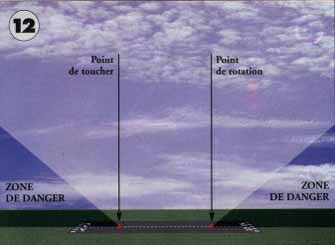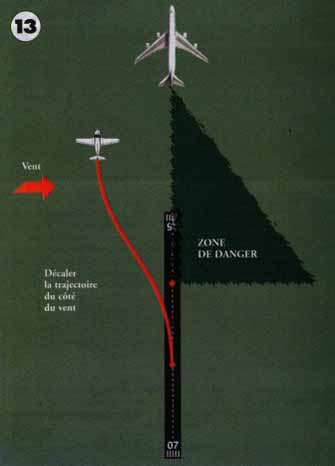|

|
|
|
Vortex and wake turbulence
(Source Info Pilote 1996
October)
|
We understand easily, when we sail on the ocean, that the ship is rippling,
is pitching and is rolling on the waves. It is less easily perceived that
is the same in the sky.
The air is fluid , like water, to the exception that its movements are invisible.
When people ask me why the plane is moving, I used to use the image of a
water stream to materialize my comments. When the river is wide and calm,
the water flows peacefully, and the boat seems to drag on a mirror. But
when the riverbanks are tightening, that the rapids are approaching, the
water trembles, the foam leaps, and the ship is rippling –
sometimes violently
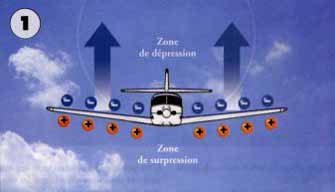
|
Today we will look at a type of turbulence very special,
wake turbulence. We'll see what happens when we are behind another
device that disrupts the fluid in which we operate. The air is disturbed
in some way, the same way that when we doing waterskiing behind a
powerboating.
To understand the dangers of this type of turbulence, we will start
by searching the aerodynamic origin. We can then study the nature
of the risk to finally determine the preventive measures available
to us. Origin of the wake turbulence. The most part of disturbances
is due to the wing of the plane. We know that his role is to generate
the lift necessary for flight. We also know (Figure 1) a depression
zone appears on the upper part of the wing (upper surface), while
a surpression zone appears on the lower part (lower surface).
* Vortices marginal (vortex) nature is so constituted that it abhors
a vacuum ... Thus the air, "tries to fill" the depression
zone. It therefore moves of the overpressure zone toward the depression
zone. The "way" is the wing tip, the air located under the
wing is guided toward above the wing (Fig. 2).
As the plane moves, this "transfer" is materialized by a
vortex at each wingtip. It can be very powerful (jumbo jet) and rotates
clockwise (viewed from the rear), at the end of the left wing, and
in the counter-clockwise at the tip of the right wing.
To Note, for cultural reasons, that these vortices generate a drag
and therefore a fuel consumption important.
This is why manufacturers have developed devices such as the winglets,
which are intended to reduce the effects of this perturbation (false
aspect ratio of the wing). Ideally would be a wing called infinite
(eg annular type, such as that studied by NASA wind tunnel, Figure
4), but we encountered technical and financial difficulties , that
have not allowed this concept still see the day ...
* Vortices of leak: now we study the flow around the wing. We see
that the wind tunnel airstream flowing over the upper surface are
not parallel to those flowing on the lower surface (Fig. 5).
When these air streams are joining at the trailing edge of the wing,
the angles described by the two paths are such that they "round"
the one around other to form a vortex, called vortex of leak. The
flow thus disrupted form at the rear of the trailing edge a veritable
sheet swirling (Fig. 6)
* Wake Turbulence: the association of marginal vortices and leak vortices
that join downstream of the profile, gives rise to a highly disturbed
area. This turbulence is called wake turbulence.
Nature of the risk. In some rare cases, the flight through wake turbulence
can cause substantial structural damage, up to the destruction of
the device ... However, the primary danger is by the rolling motion
generated by the vortex (marginal vortex wing tip).
When the rate of roll induced by the vortex exceeds the response rate
of controls, the aircraft is drawn into a movement of roll uncontrollably
by the pilot (Fig. 7). This risk is amplified by the fact that we
encounter most often these turbulent during approach phases or takeoff
. The aircraft that suffers of this effects is more vulnerable because
of its low height and its reducted speed.
I have still strongly, into my memory a movie, watched during my aeronautical
studies , on which we saw a Boeing 747 taking off. A pylon, equipped
with smoke, was placed along the track and, shortly after the passage
of the apparatus, it was possible to visualize the path of the marginal
vortices. I remember that it is suicidal to find us on aircraft in
this zone. This is exactly what was done in the rest of the document,
a test pilot aboard a Beechcraft Bonanza. Just after leaving the ground
without touching the controls, the plane made three barrels fast.
A second test with the stick pointed in maximum of its full potential,
it was only possible to perform a barrel and a half. These Americans
are crazy. But this film is, in a pedagogical point of view the best
tool I know ...
In general, the response rate of controls is sufficient to counteract
the effect (less extreme than a 747) of the roll induced by wake turbulence.
However, it is very difficult or impossible for a device small (case
of light aircraft) to control this movement since the reduced length
of the wings does not allow at the fins, to stay outside of the vortex
cone
It is therefore essential to avoid at all costs potentially dangerous
areas that we will now define.
Characteristics. Wake turbulence has certain characteristics than
the knowledge can help the pilot to locate(and thus avoid) the danger
zones.
Turbulence is real when the plane that generates its , is in flight
- at the takeoff after the rotation, at the landing, before wheels
touchdown (Fig. 8) When the wake turbulence is generated near the
ground, as this is the case during take-off and landing, the vortices
move laterally when it reaches the ground. They deviate at a speed
of about 5 Kt (Fig. 9). This means that it is sufficient just to wait
a few minutes after the passage of a plane and not to be affected
by its wake turbulences.
Attention! This is not as simple ... There are a number of potentially
dangerous situations: for example, when the crosswind component is
close to 5 Kt ( between 3 and 7Kt).
There is then a high probability that the vortex is taken back and
maintained on the runway axe (Fig. 10). Or when the wind is "rear
area." Turbulence is then offset relative to the point of touchdown
or the point of rotation (Fig. 11).
We retain that a vigilance must be given to the movements of wake
turbulence when the wind is low (3-7 kt) and especially when it is
facing three quarters back from the off axis or landing.
Let us also retain, for the record, that flight experiments have shown
that the wake turbulence generated by heavy aircraft has a rate of
descent of the order of 400 to 500 ft / min, the trend being followed
by a stabilization at 900 ft under the flight altitude of the plane
that is causing the turbulence.
Prevention. Two types of complementary preventive actions can be envisaged.
- The first is to maintain a spacing, marked by a minimal time of
separation which leaves time at wake turbulences to dissipate. Two
to three minutes are an order of magnitude satisfactory.
- The second is to adjust its trajectory to avoid potentially dangerous
areas (Fig. 12):
a) landing behind an "heavy" aircraft if the preceding aircraft
is at taking off, to land "before" its point of rotation.
If it is landing, to land "after" its point of touchdown.
Ueillez also to do the approach above or on the same level of descent.
In no case, below its plan.
b) taking off behind an "heavy"aircraft if the preceding
aircraft is at taking off, to take off "before" the point
of rotation, and continue the climb either above its plan ascending,
either shifted of the side of upwind (Fig. 13) . If it is in landing,
to take off "after" the point of touchdown of jumbo jet.
Figure 12 is a summary of potentially hazardous areas. Good flights
and attention at turbulences!
Debriefing. Uoici as a debriefing, a few guidelines that cover certain
special cases which we can sometimes be confronted.
* Approach after landing a jumbo jet on a parallel runway near:
- Assess the possibilities of occurrence of wake turbulence.
- Adopt a plan of approach greater than or equal to his own,
- Note its touchdown point and to land beyond.
* Intersection of slopes:
- Land or take off before the runway intersection.
* Jumbo jet performing a carrier gas rebate:
- An interval of three minutes should be allowed before any landing
or takeoff.
In all cases, it must be taken into account when assessing the risk
of wake vortex encounters, of wind different effects, that may cause
their displacement.
|
|
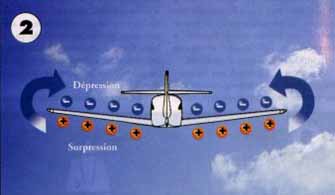
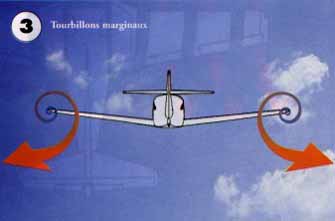 
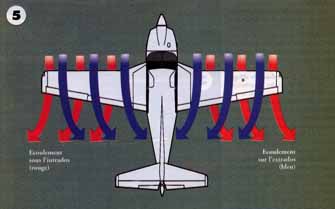 
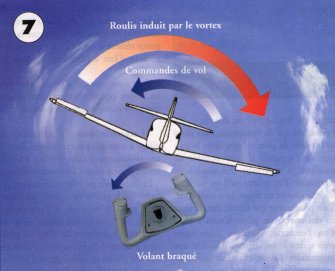 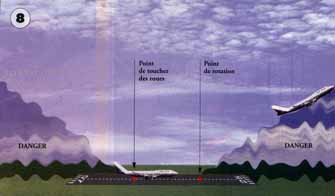
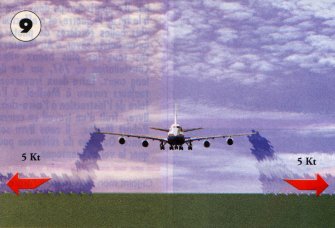 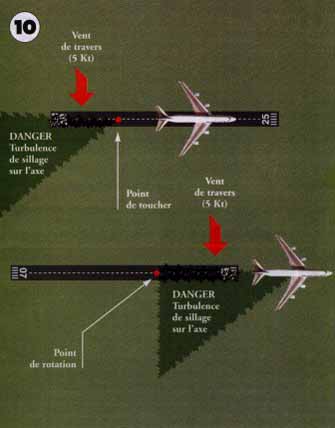
|
|
|
|

 Recommend this page |
Recommend this page |  Print this page |
Print this page |  Top of the page
Top of the page











